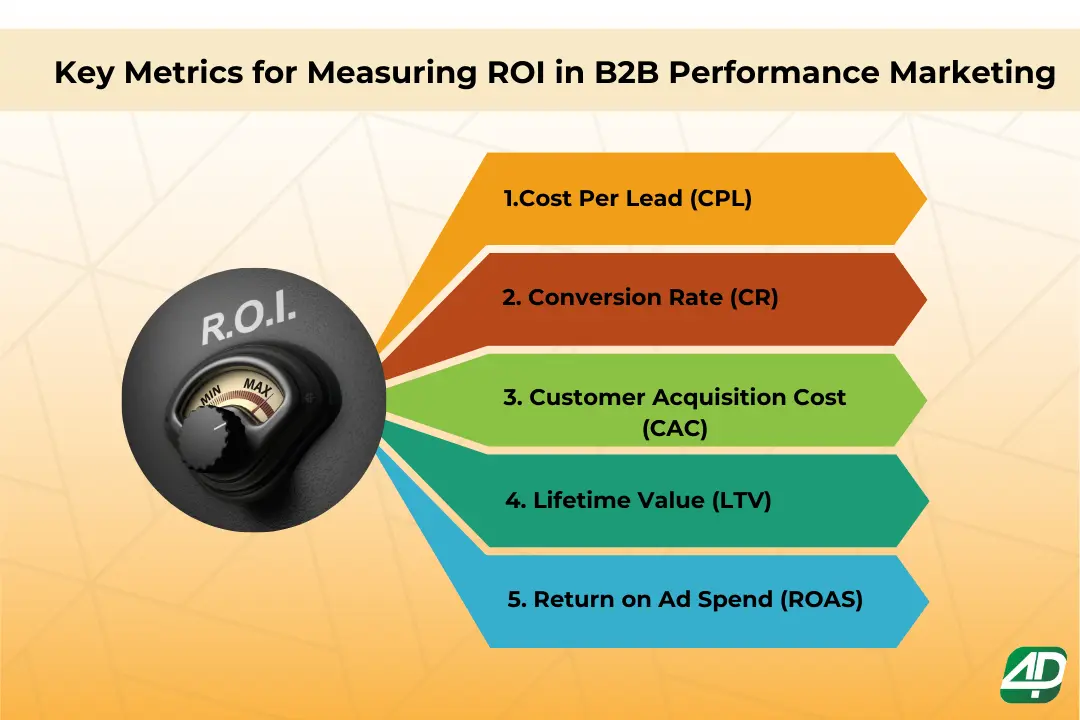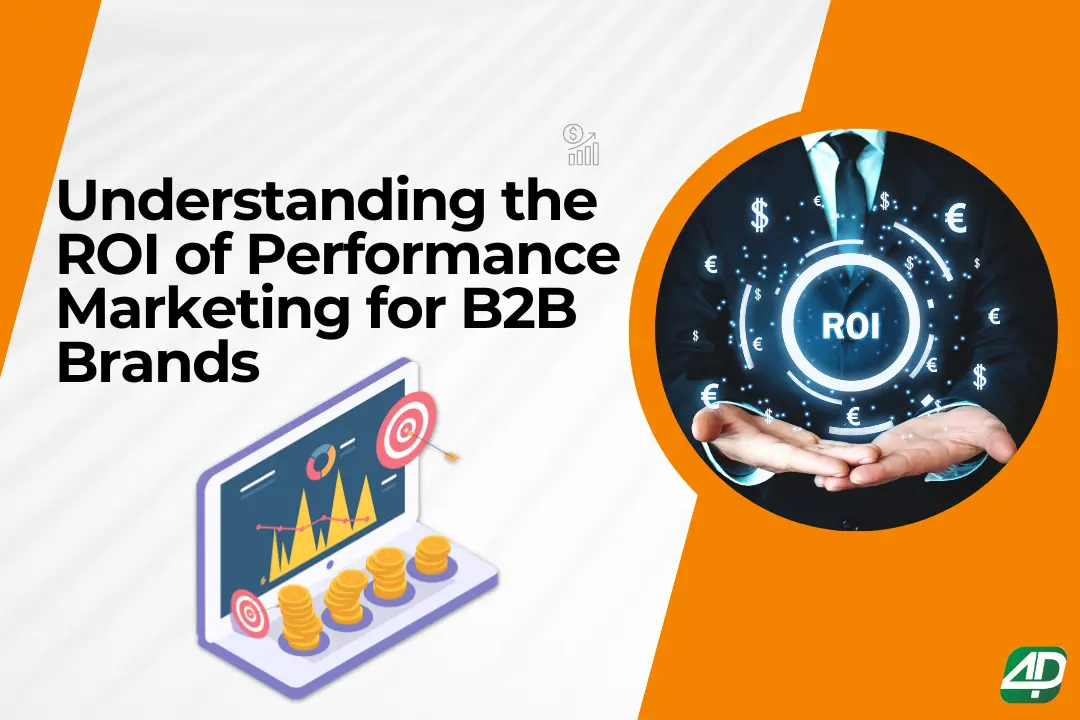Introduction
When was the last time you checked your marketing expenses and asked if they were really worth it?
In the world of B2B, where long sales cycles and high-value deals are the norm, every marketing rupee counts. Understanding the return on investment (ROI) of your performance marketing isn’t just a nice-to-have—it’s a business essential.
However, measuring ROI for B2B businesses is not as simple as counting clicks or followers. It's about linking marketing efforts to real results, such as quality leads, better relationships, and increased profits.
Now, the main question is, how do you measure ROI in a way that gives you a clear and confident understanding of your marketing success? Let’s break it down.
Highlights:
What Exactly Is Performance Marketing?
Think of performance marketing as the deal where you pay for outcomes—not promises. Unlike traditional marketing approaches, where you’re unsure what works, performance marketing is laser-focused on trackable actions like leads, conversions, and clicks.
And for B2B brands? It’s a game-changer. Why? Because every interaction can be measured, optimized, and tied back to revenue.
Take this stat: Most B2B marketers say measurable results of campaign performance are their top priority, yet 85% still struggle to connect marketing spending with sales outcomes. Performance marketing bridges that gap.
Key Metrics for Measuring ROI in B2B Performance Marketing

Till now, you must have got the idea that metrics in B2B performance marketing aren’t just numbers—they’re your roadmap to success. In an industry, where every lead, sale, and interaction counts, knowing what to measure can make all the difference between wasted spend and game-changing growth.
Here are the metrics that truly matter:
1. Cost Per Lead (CPL)
Think of CPL as your efficiency meter. It tells you how much it costs to generate a single lead. For B2B brands with lengthy sales cycles, keeping CPL in check is crucial.
Also, it is important to note that the average CPL for B2B differs based on the industry and channel. If you’re running LinkedIn ads targeting niche decision-makers, you might see higher CPLs compared to other platforms like Google Ads or Facebook Ads.
2. Conversion Rate (CR)
Next, your conversion rate tells you how many leads are actually turning into customers. This metric sheds light on the effectiveness of your entire B2B sales funnel, from lead nurturing to closing deals.
The average B2B website conversion rate is around 2.23%, but top-performing brands see rates of 5% or higher. If your conversion rate is low, it could mean your lead generation magnet isn’t compelling enough, or your follow-ups need work.
3. Customer Acquisition Cost (CAC)
CAC takes a broader view by factoring in all costs—marketing, sales, and even overhead—to acquire a customer. For B2B brands, where individual deals can be worth thousands, a high CAC might be acceptable, but it must align with profitability.
Customer Acquisition Cost (CAC) is calculated using the formula:
CAC= Number of New Customers Acquired ÷ Total Sales and Marketing Costs
Example: If a company spends ₹500,000 on sales and marketing and acquires 100 new customers, the CAC is ₹5,000 per customer.
This formula provides a comprehensive view of how much a company spends to gain each new customer, factoring in various costs such as salaries, advertising, promotions, and other related expenses.
4. Lifetime Value (LTV)
LTV measures the total revenue from a customer throughout their time with your business. It’s one of the most critical metrics for B2B brands because it justifies upfront marketing investments.
Companies with high LTV can afford to spend more on customer acquisition. For instance, Salesforce’s reported LTV-to-CAC ratio is 3:1, which is considered optimal in B2B. It means your customers should be worth three times what you spend to acquire them.
5. Return on Ad Spend (ROAS)
When running paid B2B marketing campaigns, ROAS is your go-to metric. It tells you how much revenue you’re earning for every rupee spent on ads.
B2B brands often see varied ROAS across platforms. LinkedIn might deliver a 3:1 ROAS, while Google Ads could hit 5:1. Tracking these differences allows you to allocate your budget wisely.
Why Do These Metrics Matter?
Performance marketing’s beauty is its accountability. It gives you a clear picture of what drives your ROI. This lets you refine your B2B content marketing strategies, focus on successful campaigns, and cut unnecessary spending.
Every decision is a high-stakes investment for B2B brands. These Ad spend efficiency metrics don’t just show you what’s working—they help you predict, pivot, and stay ahead of the competition.
How The 4P Solutions Can Help Your B2B Brand With the ROI of Performance Marketing?
The 4P Solutions, a digital marketing agency for B2B in Mumbai, is more than just a partner—we’re your strategic ally. With over a decade of experience, we understand the complexities of long sales cycles, niche audiences, and high-value deals.
Here’s how we help you with your industrial marketing strategy :
-
Strategies That Work for You:
- No cookie-cutter campaigns here. Our B2B marketing company crafts strategies tailored to your business goals, ensuring every move we make aligns with what matters most to you. Reaching the Right People:
- Through data-driven targeting, we identify the decision-makers who matter most and deliver messages that resonate. It’s all about making meaningful connections. Smart Spending, Big Impact:
- We focus your budget on what works, whether it’s B2B email marketing, PPC ads, social media campaigns, or other high-performing channels. Every rupee is spent with precision. Clarity You Can Count On:
- Our transparent reporting keeps you in the loop, providing real-time insights into what’s working and why. You’ll always have the full picture. Always Improving:
- We’re not the ones to set and forget. From tweaking ad creatives to A/B testing, we’re constantly optimizing to get you the best results.
For more information regarding our B2B performance marketing services, reach out to us at at mktg@the4psolutions.com or give us a call at +91 89286 09451
Conclusion
To conclude, ROI Analysis of your B2B performance marketing efforts helps you see beyond the surface-level metrics, digging into the depths of what drives revenue and growth. It aligns your every dollar spent with measurable, meaningful outcomes that lead to long-term success.
FAQs
Several factors can impact your Cost Per Lead (CPL), including the quality of your targeting, the competitiveness of your market, the channels you use (like LinkedIn vs Google Ads), and the relevance of your offers. Higher-quality leads might cost more, but they’re more likely to convert, balancing the CPL effectively.
Finding the right balance involves assessing both short-term lead generation costs and long-term customer retention value. Allocate your budget based on your business goals—prioritize lead generation for immediate sales, while also investing in customer retention strategies like loyalty programs to build lasting relationships.
Regularly monitor and analyze your metrics to understand trends and patterns. Adjust your strategies as needed—boost spend during peak seasons and cut back when results aren’t as strong. Being flexible and responsive to changes can help maintain consistent performance throughout the year.
Signs include a high CPL, low conversion rates, or poor ROAS. If you’re not seeing expected results or notice metrics trending downward, it’s a clear indicator that your campaign may need adjustments in targeting, messaging, or overall strategy.

